Independence Party (Iceland)
Independence Party Sjálfstæðisflokkurinn | |
|---|---|
 | |
| Chairperson | Bjarni Benediktsson |
| Vice-chairperson | Þórdís Kolbrún R. Gylfadóttir |
| Secretary | Vilhjálmur Árnason |
| Parliamentary group chairperson | Hildur Sverrisdóttir |
| Chief Executive | Þórður Þórarinsson |
| Founder | Jón Þorláksson Sigurður Eggerz |
| Founded | 25 May 1929 |
| Merger of | Conservative Party Liberal Party |
| Headquarters | Háaleitisbraut 1, 105 Reykjavík |
| Youth wing | Young Independents |
| Ideology | |
| Political position | Centre-right[9] |
| European affiliation | European People's Party (associate) |
| International affiliation | International Democracy Union |
| Nordic affiliation | Conservative Group |
| Colours | Blue |
| Seats in Parliament | 14 / 63 |
| Election symbol | |
 | |
| Website | |
| xd | |
The Independence Party (Icelandic: Sjálfstæðisflokkurinn, pronounced [ˈsjaul(f)ˌstaiːðɪsˌflɔhkʏrɪn]) is a conservative political party in Iceland. It is current the second largest party in the Alþingi, with 14 seats. The chairman of the party is Bjarni Benediktsson and the vice chairman of the party is Þórdís Kolbrún R. Gylfadóttir.
It was formed in 1929 through a merger of the Conservative Party and the Liberal Party.[10] This united the two parties advocating the dissolution of the Union of Denmark and Iceland; dissolution was achieved in 1944, during the German occupation of Denmark. Since its formation in 1929, the party has won the largest share of the vote in every election except 2009 and 2024, when it fell behind the Social Democratic Alliance. Every Independence Party leader has also at some point held the office of Prime Minister. Since 1983 there has been only 1 government that has excluded the Independence Party.
On fiscal issues, the Independence Party is economically liberal,[2] favouring privatisation,[11] and opposed to interventionism. Positioned ideologically on the centre-right[6][7][8] of the political spectrum,[12][13] the party is most strongly supported by fishermen and high-income earners.[14] A longstanding member of the International Democracy Union, in September 2023 the party obtained associate member status in the European People's Party.
History
[edit]Established on 25 May 1929, the Independence Party was founded through a merger of the Conservative Party (1924) and the Liberal Party (1925).[15] It readopted the name of the historical Independence Party, which had split between the Conservatives and Liberals in 1927.[16] The fusion of the Icelandic conservative and liberal parties resulted in the ascension of the Independence Party to prominence, firmly establishing it as the primary non-socialist force in Scandinavian politics.[10] From its first election, in 1931, it was the largest party in Iceland.[17]
The Independence Party won the 2007 elections, increasing their seat tally in the Althing by three. It formed a new coalition government under Geir Haarde with the Social Democratic Alliance, after the Progressive Party lost heavily in the elections. In the 2009 elections, the party dropped from 25–26 to 16 seats in the Althing, becoming Iceland's second-largest party following the Social Democratic Alliance (which gained two seats, to 20.)
The Independence Party re-entered government after the general elections in 2013, gaining 19 seats in parliament and the most votes again becoming Iceland's largest party. The Independence Party hence formed a majority government with the Progressive Party with Bjarni becoming Minister of Finance and Economic Affairs under the premiership of Sigmundur Davíð Gunnlaugsson chairman of the Progressive Party. The government coalition was ended after the Panama Papers revealed that Sigmundur Davíð Gunnlaugsson, Bjarni Benediktsson and other known members of the Independence Party held funds in offshore bank accounts. The general election in 2016 yielded a government consisting of the Independence Party, Bright Future and the Reform Party. With the Independence Party holding 21 seats in Parliament. That government then proceeded to fall apart due to Bjarni Benediktsson's father's ties to a convicted child sex offender that had his criminal records cleared by the Minister of the interior, an Independence Party MP. After the general elections 2017, called after much backlash from this decision, the Independence party formed a new government with the Left-Green Movement and the Progressive Party. The Independence Party had 17 seats in Parliament.[18]
After the 2021 parliamentary election, the new government was, just like the previous government, a tri-party coalition of the Independence Party, the Progressive Party and the Left-Green Movement, headed by Prime Minister Katrín Jakobsdóttir of Left-Green Movement.[19] In April 2024, Bjarni Benediktsson replaced Katrín Jakobsdóttir as prime minister.[20]
Ideology and platform
[edit]The Independence Party has been described as conservative,[1] liberal-conservative,[3][4] and conservative-liberal.[21][22][23]
The party has been the sole major politically right-leaning party in Iceland since its inception, and has captured a broad cross-section of centre-right voters. As a result, the party is not as far to the right as most right-wing parties in other Nordic countries, serving as a 'catch-all' party.[24] The party, like the British Conservatives, states a claim to be primarily 'pragmatic', as opposed to ideological,[14][25][26] and its name is seen as an allusion to being independent of dogma (with the original meaning, promoting independence from Denmark, having been achieved long ago).[27] For most of its period of political dominance, the party has relied upon coalition government, and has made coalitions with many major parties in parliament.[28]
The Independence Party has generally been economically liberal and advocated limited government intervention in the economy.[14] It was originally committed to laissez-faire economics, but shifted its economic policies leftwards in the 1930s, accepting the creation of a welfare state.[25]
The party is liberal concerning social issues and has historically been less conservative than other centre-right parties in Scandinavia.[25] The party was the only consistent advocate for the end of prohibition of beer, and provided three-quarters of voters in favour of legalisation; the ban was lifted in 1989.[29]
Organisation and support
[edit]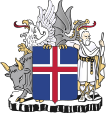 |
|---|
|
|
Historically, the party has been the most successful liberal conservative party in the Nordic countries.[24] It has a broad base of support, but is most strongly supported by Iceland's large fishing community and by businesses.[14] The Independence Party support is mostly found in the South and Southwest.[citation needed]
The Independence Party has always attempted to avoid appealing to a specific social class.[30] As such, the party is relatively successful at attracting working-class voters,[28] which partly comes from the party's strong advocacy of independence in the 1930s.[31] However, most of its strength is in the middle class,[29][32] and the party is disproportionately supported by those on high incomes and those with university educations.[14]
The party has long been endorsed by Morgunblaðið,[29] an Icelandic newspaper of record.[33] Davíð Oddsson, Iceland's longest-serving Prime Minister and former leader of the Independence Party, is one of two editors of the paper. The party was also historically supported by the afternoon newspaper Vísir, now part of DV.[25]
The party has a tradition of individualism and strong personalities, which has proven difficult for the leadership to manage.[34] The Commonwealth Party split in 1941, while the Republican Party left in 1953, both in opposition to the leftwards shift of the party away from classical liberalism.[25] Neither splinter group managed to get seats in Althingi and both vanished quickly. The Citizens' Party split from the party in 1983, but collapsed in 1994.[26]
Its youth wing, Young Independents, is by far the largest youth organisation in Iceland, with over 12,000 members. It is slightly more classically liberal than the senior party.[35]
The party has a very large membership base, with 15% of the total population being a member of the party.[36]
International relations
[edit]
For years, the Independence party has been a member of the International Democracy Union; the Union includes members such as the Conservative Party (Norway), Moderate Party (Sweden), The Republicans (France), the National Coalition Party (Finland), and the Christian Democratic Union (Germany). In 2011, the party joined the European Conservatives and Reformists Party, a centre-right Eurosceptic political organisation, but withdrew in 2021. In September 2023, it joined the pro-EU European People's Party as an associate member.
Election results
[edit]| Election | Leader | Votes | % | Seats | +/– | Position | Government |
|---|---|---|---|---|---|---|---|
| 1931 | Jón Þorláksson | 16,891 | 43.82 | 15 / 42
|
New | Opposition | |
| 1933 | 17,131 | 48.01 | 20 / 42
|
Coalition | |||
| 1934 | 21,974 | 42.32 | 20 / 49
|
Opposition | |||
| 1937 | Ólafur Thors | 24,132 | 41.31 | 17 / 49
|
Opposition | ||
| 1942 (Jul) | 22,975 | 39.52 | 17 / 49
|
Minority | |||
| 1942 (Oct) | 23,001 | 38.55 | 20 / 52
|
Opposition | |||
| 1946 | 26,428 | 39.50 | 20 / 52
|
Coalition | |||
| 1949 | 28,546 | 39.53 | 19 / 52
|
Minority | |||
| 1953 | 28,738 | 37.12 | 21 / 52
|
Coalition | |||
| 1956 | 35,027 | 42.37 | 19 / 52
|
Opposition | |||
| 1959 (Jun) | 36,029 | 42.49 | 20 / 52
|
Opposition | |||
| 1959 (Oct) | 33,800 | 39.72 | 24 / 60
|
Coalition | |||
| 1963 | Bjarni Benediktsson | 37,021 | 41.43 | 24 / 60
|
Coalition | ||
| 1967 | 36,036 | 37.50 | 23 / 60
|
Coalition | |||
| 1971 | Jóhann Hafstein | 38,170 | 36.22 | 22 / 60
|
Opposition | ||
| 1974 | Geir Hallgrímsson | 48,764 | 42.73 | 25 / 60
|
Coalition | ||
| 1978 | 39,982 | 32.72 | 20 / 60
|
Opposition | |||
| 1979 | 43,838 | 35.42 | 21 / 60
|
Opposition | |||
| 1983 | 50,251 | 38.67 | 23 / 60
|
Coalition | |||
| 1987 | Þorsteinn Pálsson | 41,490 | 27.17 | 18 / 63
|
Coalition | ||
| 1991 | Davíð Oddsson | 60,836 | 38.56 | 26 / 63
|
Coalition | ||
| 1995 | 61,183 | 37.07 | 25 / 63
|
Coalition | |||
| 1999 | 67,513 | 40.74 | 26 / 63
|
Coalition | |||
| 2003 | 61,701 | 33.68 | 22 / 63
|
Coalition | |||
| 2007 | Geir Haarde | 66,754 | 36.64 | 25 / 63
|
Coalition | ||
| 2009 | Bjarni Benediktsson | 44,371 | 23.70 | 16 / 63
|
Opposition | ||
| 2013 | 50,454 | 26.70 | 19 / 63
|
Coalition | |||
| 2016 | 54,990 | 29.00 | 21 / 63
|
Coalition | |||
| 2017 | 49,543 | 25.25 | 16 / 63
|
Coalition | |||
| 2021 | 48,708 | 24.39 | 16 / 63
|
Coalition | |||
| 2024 | 41,143 | 19.36 | 14 / 63
|
Opposition |
Leadership
[edit]| Nº | Chairman | Took office | Left office | Duration | |
|---|---|---|---|---|---|
| 1 | 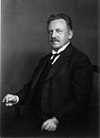
|
Jón Þorláksson (1877–1935) |
29 May 1929 | 2 October 1934 | 5 years, 4 months, 3 days (1,952 days) |
| 2 | 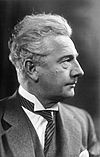
|
Ólafur Thors (1892–1964) |
2 October 1934 | 22 October 1961 | 27 years, 20 days (9,882 days) |
| 3 | 
|
Bjarni Benediktsson (1908–1970) |
22 October 1961 | 10 July 1970 | 8 years, 8 months, 18 days (3,183 days) |
| 4 | 
|
Jóhann Hafstein (1915–1980) |
10 July 1970 | 12 October 1973 | 3 years, 3 months, 2 days (1,190 days) |
| 5 | 
|
Geir Hallgrímsson (1925–1990) |
12 October 1973 | 6 November 1983 | 10 years, 25 days (3,677 days) |
| 6 | 
|
Þorsteinn Pálsson (born 1947) |
6 November 1983 | 10 March 1991 | 7 years, 4 months, 4 days (2,681 days) |
| 7 | 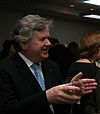
|
Davíð Oddsson (born 1948) |
10 March 1991 | 16 October 2005 | 14 years, 7 months, 6 days (5,334 days) |
| 8 | 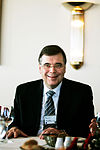
|
Geir Haarde (born 1951) |
16 October 2005 | 29 March 2009 | 3 years, 5 months, 13 days (1,260 days) |
| 9 | 
|
Bjarni Benediktsson (born 1970) |
29 March 2009 | Present | 15 years, 281 days (5760 days) |
Footnotes
[edit]- ^ a b Bale, Tim (2021). Riding the populist wave: Europe's mainstream right in crisis. Cristóbal Rovira Kaltwasser. Cambridge, United Kingdom: Cambridge University Press. p. 34. ISBN 978-1-009-00686-6. OCLC 1256593260.
- ^ a b Siaroff, Alan, The Effects of Differing Electoral Systems on Party Politics, Government Formation and Voter Turnout, p. 69
- ^ a b Agust Thor Arnason (2006). "The European Union Seen From the Top – A View of an Inside-Outsider". In Joakim Nergelius (ed.). Nordic and Other European Constitutional Traditions. BRILL. p. 34. ISBN 978-90-474-0978-6.
- ^ a b Nordsieck, Wolfram (2017). "Iceland". Parties and Elections in Europe.
- ^ [3][4]
- ^ a b Nordic States and European Integration: Awkward Partners in the North? p.106. Edited by Malin Stegmann McCallion and Alex Brianson. Published by Palgrave Macmillan. First published in 2017. Published in Cham, Switzerland. Accessed via Google Books.
- ^ a b "Iceland election: Independence Party still has most seats". BBC News. 29 October 2017. Retrieved 30 October 2017.
- ^ a b "Politics in Iceland: A beginner's guide". Iceland Monitor.
- ^ [6][7][8]
- ^ a b Arter, David (15 February 1999). Scandinavian Politics Today. Manchester University Press. p. 88. ISBN 978-0-7190-5133-3.
- ^ Fontaine, Andie Sophia (February 23, 2021). Iceland’s Political Parties: Who Are These People? The Reykjavik Grapevine. Retrieved: 1 3 September 2021.
- ^ Önnudóttir, Eva H.; Hardarson, Ólafur Th. (11 December 2017). "Iceland 2017: A new government from left to right". Party Systems and Governments Observatory. University of Nottingham.
- ^ Deloy, Corinne (2 May 2013). "The rightwing opposition wins in the general elections in Iceland". Robert Schuman Foundation. Archived from the original on 10 December 2022. Retrieved 15 May 2016.
- ^ a b c d e Siaroff, Alan (2000). Comparative European party systems: an analysis of parliamentary elections. London: Taylor & Francis. p. 295. ISBN 978-0-8153-2930-5.
- ^ Cook, Chris; Paxton, John (18 June 1975). European Political Facts 1918–73. Springer. p. 177. ISBN 978-1-349-01535-1.
- ^ McHale, Vincent E.; Skowronski, Sharon (1983). Political Parties of Europe: Albania-Norway. Ann Arbor: University of Michigan Press. p. 522. ISBN 978-0-313-23804-8.
- ^ Tomasson (1980), pp. 41–2
- ^ "Iceland election: centre-right parties lose majority". the Guardian. 29 October 2017.
- ^ "New Government of Iceland Takes Office". Iceland Monitor. 29 November 2021.
- ^ Bryant, Miranda; correspondent, Miranda Bryant Nordic (10 April 2024). "Iceland appoints Bjarni Benediktsson to replace Katrín Jakobsdóttir as PM". The Guardian.
{{cite news}}:|last2=has generic name (help) - ^ Europe in Revolt. Catarina Príncipe, Bhaskar Sunkara. Chicago, Illinois: Haymarket Books. 2016. p. 65. ISBN 978-1-60846-658-0. OCLC 952667068.
{{cite book}}: CS1 maint: others (link) - ^ Bértoa, Fernando Casal (2021). Party system closure : party alliances, government alternatives, and democracy in Europe. Zsolt Enyedi (1 ed.). Oxford. p. 59. ISBN 978-0-19-255668-4. OCLC 1250648339.
{{cite book}}: CS1 maint: location missing publisher (link) - ^ Kopecek, Lubomír; Hloušek, Vít (2013). Origin, Ideology and Transformation of Political Parties: East-Central and Western Europe Compared. Ashgate Publishing, Ltd. p. 89. ISBN 978-1409499770.
- ^ a b Hansen, Erik Jørgen (2006). Welfare trends in the Scandinavian countries, Part 2. New York: M. E. Sharpe. p. 81. ISBN 978-0-87332-844-9.
- ^ a b c d e Tomasson (1980), p. 42
- ^ a b Cross, William (2007). Democratic reform in New Brunswick. Toronto: Canadian Scholars' Press. pp. 68–9. ISBN 978-1-55130-326-0.
- ^ Woods, Leigh; Gunnarsdóttir, Ágústa (1997). Public Selves and Political Stages. London: Routledge. p. 10. ISBN 978-3-7186-5873-2.
- ^ a b Arter, David (2006). Democracy in Scandinavia. Manchester: Manchester University Press. p. 50. ISBN 978-0-7190-7047-1.
- ^ a b c Gunnlaugsson, Helgi; Galliher, John F. (2000). Wayward Icelanders. Madison: University of Wisconsin Press. p. 39. ISBN 978-0-299-16534-5.
- ^ Jónsson, Ásgeir (2009). Why Iceland?. New York: McGraw-Hill. p. 140. ISBN 978-0-07-163284-3.
- ^ Arter, David (1999). Scandinavian politics today. Manchester: Manchester University Press. p. 91. ISBN 978-0-7190-5133-3.
- ^ Gill, Derek; Ingman, Stanley R. (1994). Eldercare, distributive justice, and the welfare state. Albany: State University of New York Press. p. 90. ISBN 978-0-7914-1765-2.
- ^ Pálsson, Gísli (2007). Anthropology and the new genetics. Cambridge: Cambridge University Press. p. 132. ISBN 978-0-521-67174-3.
- ^ Siaroff, Alan (11 September 2002). Comparative European Party Systems: An Analysis of Parliamentary Elections Since 1945. Routledge. p. 291. ISBN 978-1-135-58024-7.
- ^ "Vona að mitt framboð verði hvatning fyrir aðrar konur". Morgunblaðið (in Icelandic). 16 September 1997. Retrieved 27 November 2011.
- ^ grapevine.is (3 April 2009). "The Independence Party featured in Grapevine Magazine". Grapevine.is. Retrieved 18 September 2017.
References
[edit]- Tomasson, Richard F. (1980). Iceland: The First New Society. Minneapolis: University of Minnesota Press. ISBN 978-0-8166-0913-0.
External links
[edit]- Official website
- The National Youth Organisation of the Independence Party, named Samband ungra sjálfstæðismanna or SUS in Icelandic, is one of the oldest political youth movements in Iceland.
- About the Independence Party
